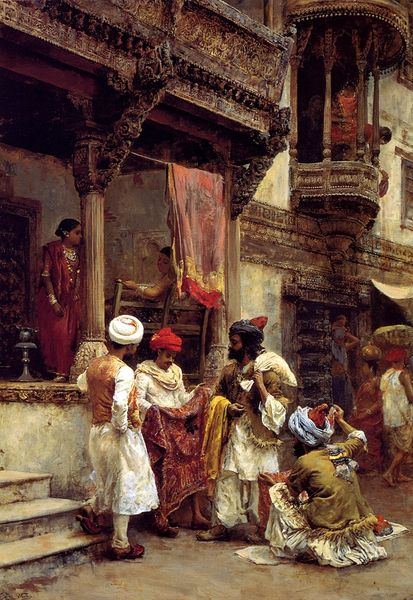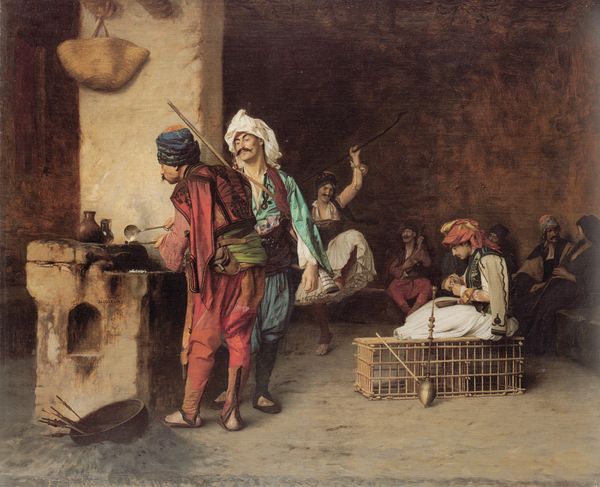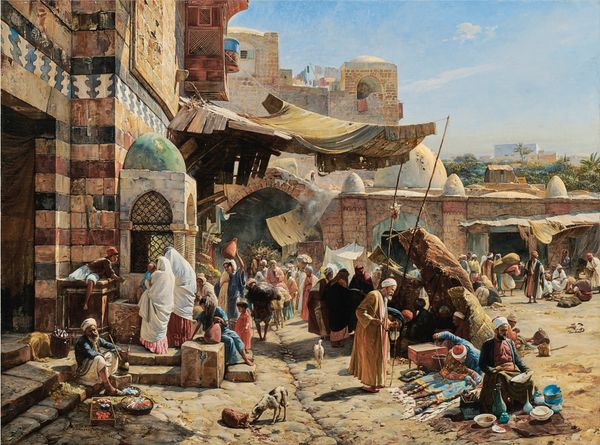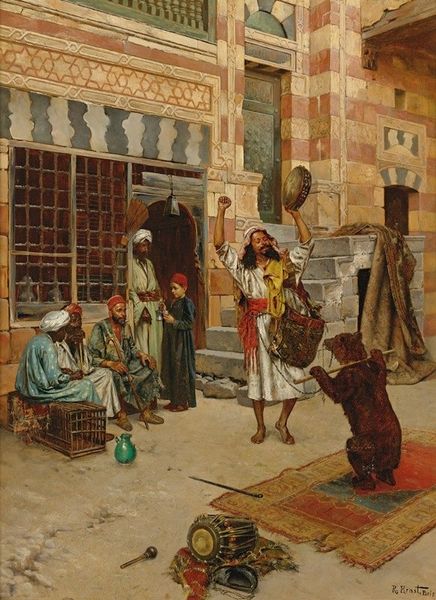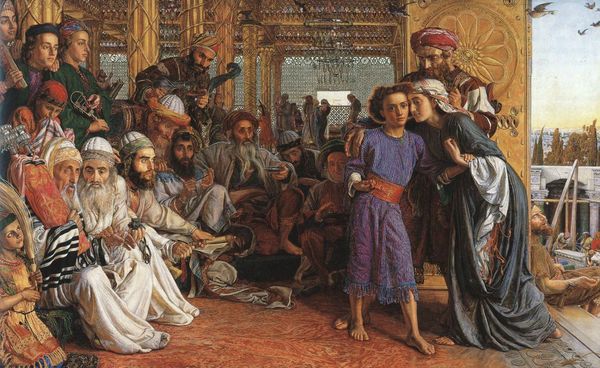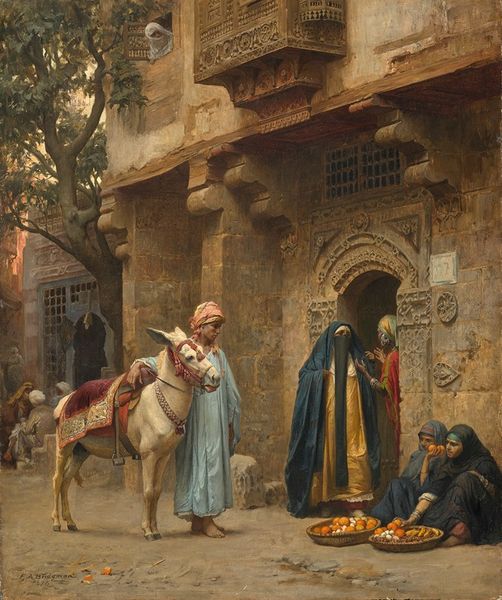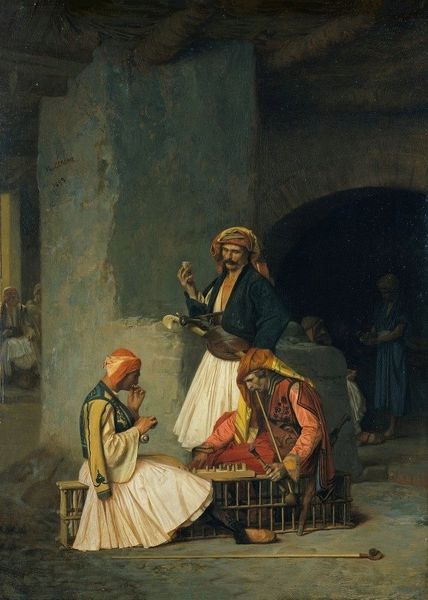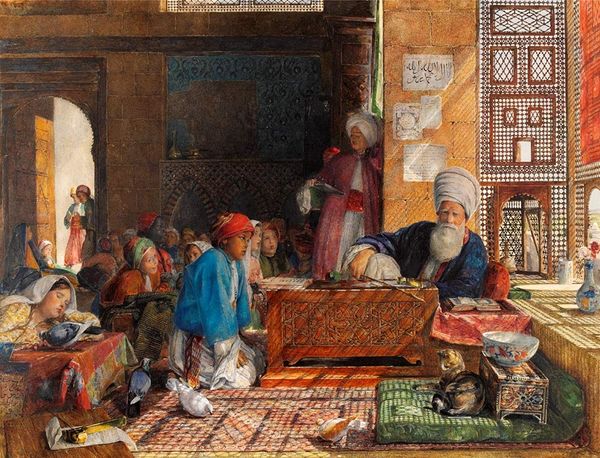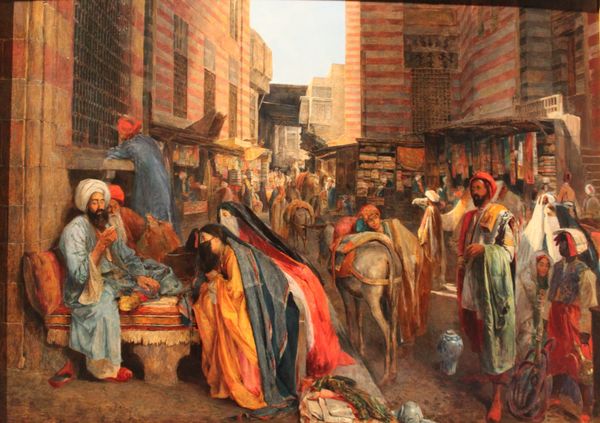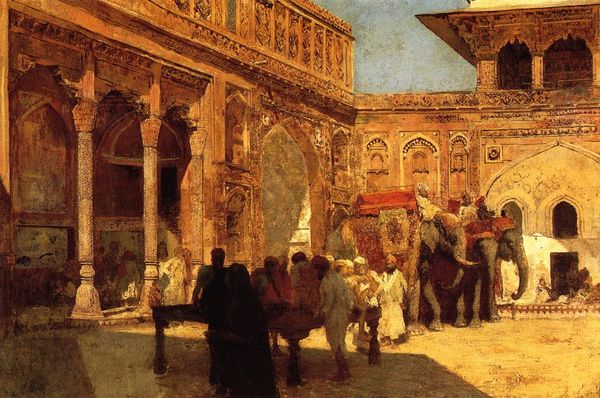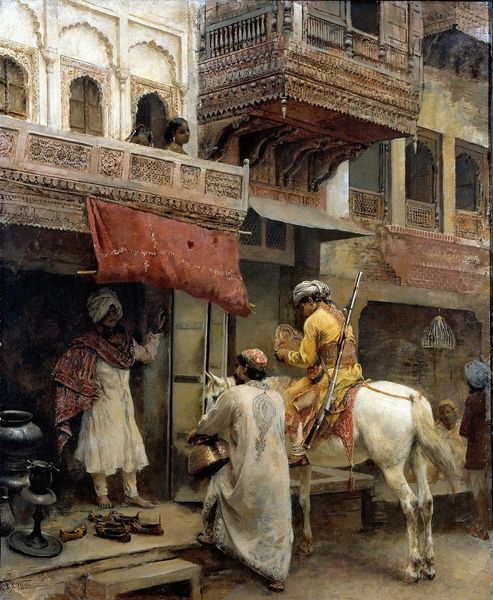
painting, oil-paint
#
painting
#
oil-paint
#
holy-places
#
oil painting
#
orientalism
#
cityscape
#
islamic-art
#
genre-painting
#
realism
Copyright: Public domain
Editor: This oil painting, "A Portrait of the Gate of the Great Umayyad Mosque, Damascus," painted around 1890 by Gustav Bauernfeind, captures a bustling scene. What strikes me most is the contrast between the intricate details of the architecture and the everyday activities of the people depicted. How do you interpret this work? Curator: The doorway itself acts as a liminal space, a visual threshold laden with symbolic meaning. Think of Janus, the Roman god of doorways and transitions. What purpose do you believe the detailed ornamentation plays here? Is it merely decorative? Editor: I guess not just decoration. It feels like it’s meant to inspire awe and perhaps connect with something greater… divine? Curator: Precisely! Bauernfeind is not simply documenting a scene. Consider the figures within the frame. Are they idealized representations, or something else? Notice the man with musical instruments seated on the floor near the entrance, or the gathering inside. Editor: They seem like genre types rather than individual portraits… more like symbols. Curator: Exactly. These figures represent aspects of Islamic life and culture. Furthermore, the Great Umayyad Mosque, was initially built on the site of a Christian basilica dedicated to John the Baptist. Bauernfeind uses the architectural landscape and the depiction of rituals to evoke something…a memory, perhaps? What feelings does the artist seem to want to conjure, for viewers both Western and Middle Eastern? Editor: I see now. There’s a conversation happening here about cultural exchange and how memory shapes our understanding of places and people. It makes me think about Orientalism and its role in shaping Western perceptions. Curator: Yes. Through understanding the iconography, we can unravel the intended purpose, but also acknowledge the lens of its creation, allowing us to view the past through a more nuanced perspective. Editor: That’s given me a lot to think about regarding visual symbols and the layers of meaning within them! Curator: Indeed. By recognizing the symbolic language in this work, we not only gain a better understanding of the artwork, but also the enduring relevance of symbols in our own cultural narratives.
Comments
No comments
Be the first to comment and join the conversation on the ultimate creative platform.
